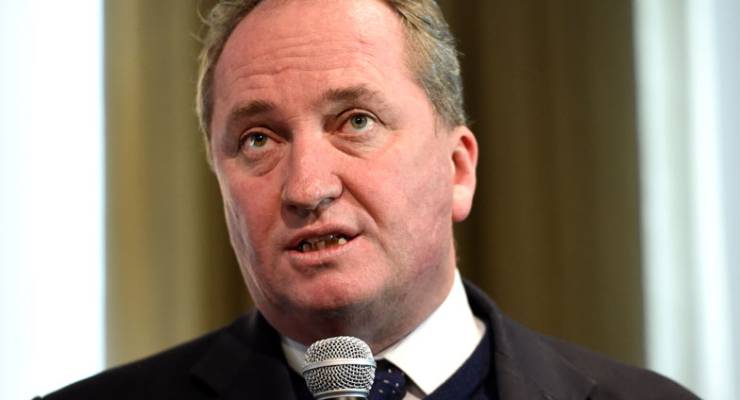
Since the late 1990s, the Coalition has been justifying reducing Australia’s media ownership laws on the basis that the internet made regulation obsolete. That it also, apparently, justified increasing regulation in other areas (such as for digital TV) was beside the point — the internet was enabling media diversity, so ownership laws should be dumped.
The argument never made a lot of sense — the internet, to the extent it was ever some sort of bastion of diversity, was rapidly and successfully colonised by mainstream media companies. But now the argument has been reversed: the internet is destroying media diversity, so ownership laws should be dumped. As a premise, it at least has the benefit of being true, even if the conclusion doesn’t necessarily follow. The advertising revenue that funded analog media business models has shifted to online companies, who don’t spend it on journalism. Media companies face an existential threat. So, the argument goes, they must be allowed to grow bigger, or they will vanish altogether.
How far does this advance the government’s case that the 75% reach rule and “two out of three” be abolished? Let’s start with the easy one: the restriction of a television licensee to no more than 75% of the population is the media equivalent of that rule that early motor vehicles had to have someone waving a red flag walk ahead of them at all times. Labor and the Liberals agree its time is long over. Only the genuinely thick or grossly self-interested could oppose removal of the 75% rule. Enter Nationals MPs, who won’t support a removal of the rule without guarantees about local content — primarily aimed at forcing media companies to keep a minimum number of microphones and cameras pointed at them when they give a “media conference” in Upper Dorrigo.
Two out of three, however, is far more problematic. That’s the restriction that you can’t own more than two of a newspaper, a TV licence and a radio licence in a radio licence area. It, too, is decidedly analog in its origins, and it has plenty of flaws. Radio licence areas make for a pretty dumb basis for media ownership laws; the rule doesn’t take into account either of the national newspapers (not “associated” with any one licence area, you see) and radio, TV and newspapers now read like Google’s hit list of markets to carve up, not the highly influential media platforms they were when Paul Keating first gave media companies the choice of being princes of print or the queens of screens.
But that, proponents of reform say, is the point: unless media companies and especially newspaper-based ones like News Corp or Fairfax are allowed to expand across all of those media, they’ll be hobbled in their efforts to withstand the onslaught of the internet and eventually succumb altogether. You have to, in a sense, destroy diversity in order to save it.
The Coalition tried to kill off two out of three in 2006, but to head off a revolt by the Nationals and secure passage of its broader media package, Peter Costello and John Howard put the restriction back in the package, allowing it to go through and, coincidentally, enabling Costello’s friend James Packer to sell out of Nine to foreign investors (foreign ownership restrictions were also removed).
While both sides of the argument have vested interests, what’s clear is that the internet-is-killing-diversity argument is a stronger case for media ownership reform than internet-is-enabling-diversity ever was. There’s also the secondary issue that the once compelling arguments for protecting diversity have been weakened as the influence of regulated media has waned. The 6pm news bulletins might still command a million sets of eyeballs, but who seriously maintains that newspapers still wield massive influence? For three federal elections in a row, The Daily Telegraph in Sydney has tried to swing western Sydney to the Liberals and failed each time — indeed, the tabloid failed badly in the July election.
But no matter where you come on two out of three, neither keeping it nor dumping it is going to protect diversity — or quality journalism — in the long term. That’s what has been missing so far from the limited debate around the current iteration of media reform — an understanding that any rule changes are only a holding measure in the full-scale retreat of traditional media before the forces of the internet. What does a long-term Australian media landscape look like? Traditionally the government, through its spending on public broadcasting and its high level of regulation of the media, has played a critical role in shaping that landscape — reflecting the social consensus that media is too influential simply to be left to the operation of the marketplace.
If that argument still stands — and maybe it doesn’t; after all, every industry likes to argue it is “special” and should receive help from government — then dumping 75% and two out of three should only be the first part of a longer-term reform package, one that might involve stronger resourcing of public broadcasting and support for public interest journalism. But that would entail viewing media ownership reform as about serving the public interest, rather than the powerful families who control Australia’s media industry.








Crikey is committed to hosting lively discussions. Help us keep the conversation useful, interesting and welcoming. We aim to publish comments quickly in the interest of promoting robust conversation, but we’re a small team and we deploy filters to protect against legal risk. Occasionally your comment may be held up while we review, but we’re working as fast as we can to keep the conversation rolling.
The Crikey comment section is members-only content. Please subscribe to leave a comment.
The Crikey comment section is members-only content. Please login to leave a comment.